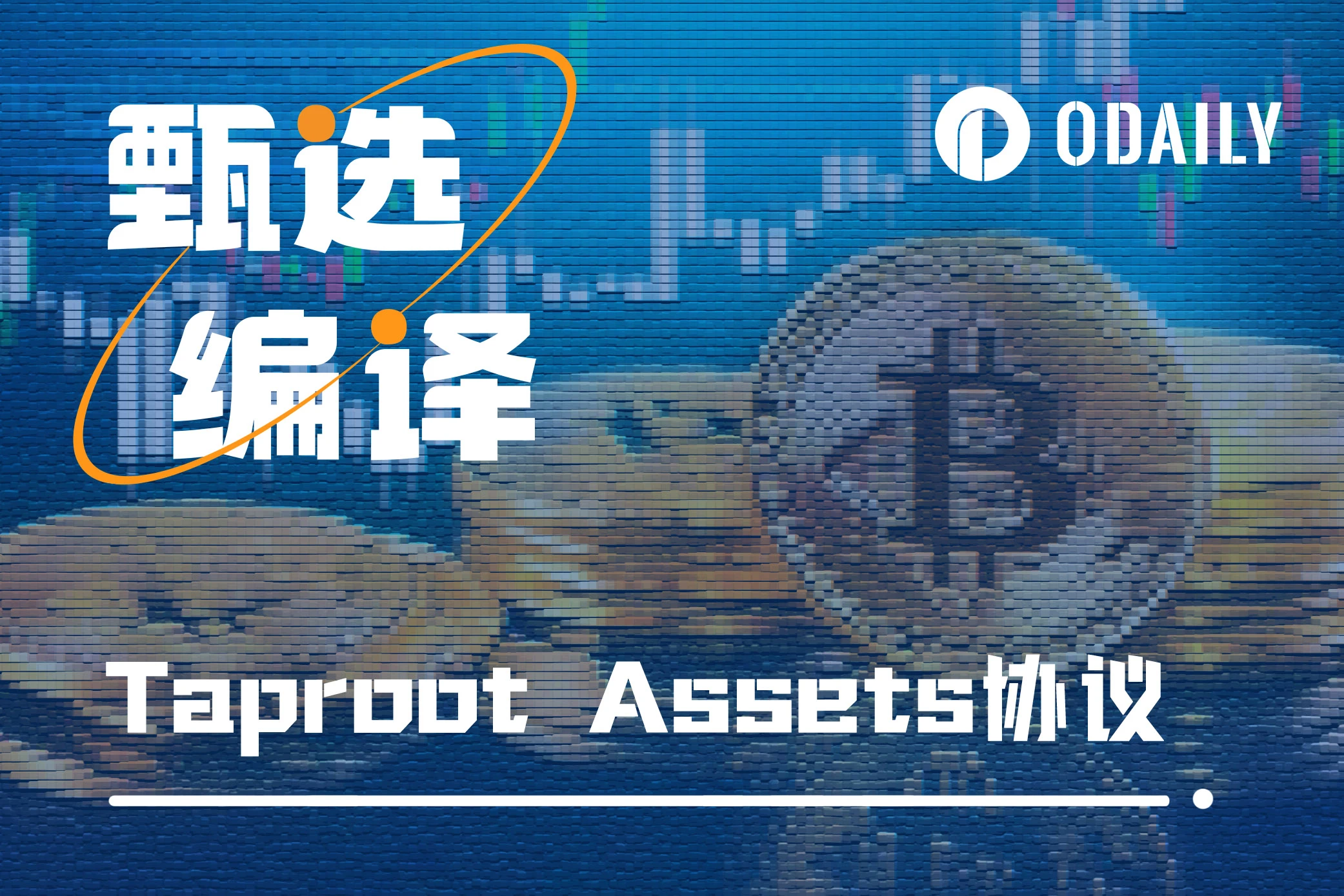Original author -bioniq CEO Bob Bodily
Compiled - Odaily Jessica

On October 19, Lightning Labs released the Taproot Assets protocol, allowing the issuance of stablecoins and other assets on the Bitcoin network and Lightning Network. bioniq CEO Bob Bodily published an introduction on the X platform detailing the protocol. Odaily compiled it as follows:
Essence of article
Taproot Assets is a Bitcoin meta-protocol integrated directly with the Lightning Network, supporting FT (fungible tokens) and NFT (non-fungible tokens);
Taproot Assets does not use Bitcoin as a full data availability layer (like the Lightning Network). Users store their own data by default, or can add additional trust assumptions via off-chain data stores (called universes);
Taproot Assets is an excellent fungible token protocol, but mediocre (for now) as a non-fungible token protocol.
What are Taproot Assets?
1. Taproot Assets (Taproot Assets) is a meta-protocol for Bitcoin, similar to Ordinals, BRC-20, Runes, Atomics, TAP, PIPE or RGB. It can handle fungible, semi-fungible and non-fungible tokens.
2. Taproot Assets is completely based on UTXO (like Runes and PIPE), which means it can integrate well with Bitcoin native technologies (such as RGB, Lightning, DLC, etc.).
3. Taproot Assets integrates directly with Lightning Network. This means you can use a Taproot transaction to launch a Lightning channel, and deposit BTC and Taproot Assets into a Lightning channel in a single Bitcoin transaction.
4. Taproot Assets Use Taproot transactions to create assets on Bitcoin. Data is stored in a Taproot tree, with token metadata stored on the creators device by default, or optionally in an off-chain data warehouse/indexer called a Universe.
Fungible Tokens on Taproot Assets
As a fungible token protocol, Taproot Assets has the following characteristics:
Low UTXO footprint (similar to Runes/PIPE) as users can create or transfer multiple tokens in a single transaction;
Users can store most transaction data off-chain themselves or in the Universe, which means large transactions have a small on-chain footprint;
It’s completely UTXO-based, so it integrates well with Bitcoin’s Lightning, DLCs, RGB, etc.;
It integrates directly with Lightning so users can make fast and cheap transactions after transferring to Lightning (all coins + BTC in a single transaction).
Taproot Assets has a lot of potential in terms of flexibility, Taproot Assets says: How individual account holders interact with each other is not dictated by Taproot Assets, but can be application-specific. Issuers are responsible for defining the assets or intending to restrict those assets. Flexibility in approach.”
Non-Fungible Tokens on Taproot Assets
However, when it comes to non-fungible tokens, Taproot Assets are very similar to Ordinals or Stamps in that users can create and transfer assets (which can be ERC-721 or ERC-1155 assets) using Bitcoin UTXOs. The difference is that Taproot Assets’ images and metadata are not stored on-chain. It is theoretically possible to store on-chain, which means there may be a way to leverage Bitcoin as a data storage layer, but by default, images and image metadata are stored off-chain.
For data validity, Taproot Assets offers a double efficiency advantage. That is, users can create a thousand tokens or airdrop to thousands of addresses with very small transactions (most of the data is off-chain, and only a small amount of data is actually stored on the chain).
This is actually pretty good. However, if off-chain data is lost, users will lose their tokens forever.
This may seem like a significant limitation, but this is how the Lightning Network currently works, without Bitcoin as a full data validation layer, which means users trust themselves (or other nodes) to index and save data, otherwise may lose their tokens.
therefore,Taproot Assets does not utilize Bitcoin as a layer for data validation, which is different from Ordinals, BRC-20, Runes, PIPE, etc.
This means that Taproot Assets is a very efficient meta-protocol with a small on-chain footprint, but users will need to rely on an off-chain universe (or their own data storage) to protect their tokens.
Taproot Assets Trust Assumptions
Since Taproot Assets is a Bitcoin meta-protocol, it has the same trust assumptions as all other Bitcoin fungible token protocols, namely:
Users rely on off-chain indexers to maintain state (this is true for all other Bitcoin meta-protocols, regardless of whether users store the state themselves);
Users rely on themselves or the Universe to maintain ownership of their tokens. This is an additional assumption for Taproot Assets over and above most other Bitcoin fungible token protocols, as one will lose their tokens if their off-chain state is lost;
Wrong Universe (or wrong local state) can result in losing BTC when doing a PSBT swap between Taproot Asset and your BTC (same as with BRC-20 or Ordinals);
Its uncertain whether these assumptions will change (if at all) once Taproot Assets are deposited into a Lightning channel, at which point the user may be inheriting all of Lightning Networks trust assumptions.
How Taproot Assets work on the Lightning Network
For Lightning Network, you can use Taproot Assets to create a new stablecoin taUSD on Bitcoin (1:1 pegged to USDC assets), and then use a single Bitcoin transaction to transfer BTC and taUSD into the Lightning Network channel, so that users can use taUSD to stabilize Use coins to pay Lightning invoices or perform other DeFi operations.
To summarize, the native integration of Taproot Assets on Lightning makes stablecoin payments possible. It is very convenient to directly put Taproot Assets into Lightning channels. It has the potential to play a role in Bitcoin DeFi.
Due to Taproot Assets native integration with Lightning, its called a quick bridge to L2 because its built into the protocol. Instead of bridging tokens to sidechains or sovereign rollups, users simply deposit Taproot Assets into Lightning channels using Taproot transactions and are good to go.
Summarize
I like Taproot Assets because it has different trade-offs than existing Bitcoin fungible token protocols, which makes it have advantages and disadvantages and be more likely to solve different problems, attract different users, and be used in different scenarios Play a good role.
I love the direct integration with Lightning Network. I know Lightning isnt the ultimate scaling solution for Bitcoin, but being able to complete a single Taproot transaction and quickly trade Taproot Assets would definitely be nice.
As usual, still in the very early stages. V 0.3.0 alpha version means there will still be some bugs. So please be careful if you are testing it.
Tip: The V 0.3.0 alpha release means youll lose assets if youre not careful, so if youre trying Taproot Assets, make sure you know what youre doing.










